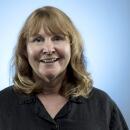Split in 310 Area Code Is Possible
- Share via
Four years after attempts to split the 310 area code sparked protests from Santa Monica to San Pedro, a state regulatory judge will propose later this week that the South Bay should be broken off to form a new 424 area code.
But members of the California Public Utilities Commission, which has final say on the area code split, have already expressed doubts about the judge’s upcoming order. One member plans to introduce an alternative that would stall any action until federal regulators act on ideas that would slow the need for new phone numbers.
The order, designed to deal with the dwindling supply of telephone numbers, would split the 310 code at Imperial Highway. Santa Monica, Malibu and West Los Angeles would keep using 310 while Torrance, Redondo Beach, the Palos Verdes Peninsula and surrounding towns would take the new area code -- the first in California since 1999.
The prospect of a split met with criticism from South Bay merchants and community leaders.
“Expense, expense, expense,” groaned Rita Koch, owner of Ladera Travel in El Segundo.
Like other companies, cities and organizations, Koch would have to spend money on new business cards, stationery and brochures. And for businesses like hers, customers who pop in about once a year might not find her phone number once the temporary forwarding messages end.
A survey by the South Bay Cities Council of Governments found that larger cities like Inglewood and Carson would spend up to $75,000 to change their forms, directories and other documents, and that smaller cities like Lomita and Hermosa Beach would pay about $15,000.
With budget cuts looming because of the state’s fiscal crisis, said Jacki Bacharach, the council’s executive director, “it’s hard for cities to have unnecessary costs, especially now.”
Larger companies also would be hit with the expense of changing not only stationery but Web site numbers, said Helen Duncan, executive director of the Manhattan Beach Chamber of Commerce.
“It’s not just the businesses we’re worried about,” she said. “We are concerned about our handicapped and our senior citizens who are going to have to learn new numbers for some of their doctors and relatives. All those people would be impacted, and we don’t think it’s necessary.”
Regulators estimate the 310 area code, carved out of the 213 area code in 1992, could run out of new numbers late this year. After a split, 310 could last up to six years before it runs out of numbers, and the 424 code could last up to 12 years. It would be the second split for 310; the 562 area code covering Long Beach and southeast Los Angeles County was created in 1997.
PUC member Loretta Lynch said the state may need to eventually split 310 because there is a finite variation of numbers available. But she believes new conservation measures could put the switch off for several years.
She suggested other solutions -- such as special area codes just for phones connected to credit card machines, faxes and other machine-to-machine devices -- could be studied to see if they can ease the burden on existing area codes.
Lynch also sees help in two measures pending before the Federal Communications Commission.
One would allow wireless customers to keep their cellular phone numbers if they switch carriers. Wireless firms have been fighting hard to prevent this largely because they believe it will lead to more customers switching wireless carriers.
Allowing portability, Lynch said, would reduce the need for wireless companies to assign new numbers to customers they win over from rivals.
Under another measure, telephone companies could donate more of their unused numbers to a pool available to other carriers looking for new numbers for their customers. The FCC has not yet ruled on that matter.
In March, the PUC withdrew its request to the FCC for approval to use 424 as a special overlay to handle wireless numbers and those assigned to automated machines. The state agency decided there wasn’t enough time to install the overlay even if the FCC approved it.
Existing efforts to conserve numbers already are slowing the rate at which companies are taking numbers, PUC staffers said.
In the 310 area code, the agency has been giving numbers “when we’re getting requests,” said Cherrie Conner, a PUC staff member. About 560,000 new numbers are available and could last until the end of the year under current conservation measures.
A key change last fall has helped delay the breakup of the 310 area code. The PUC limited carriers to taking 1,000 new numbers at a time rather than the previous limit of 10,000.
“The full benefits of that are still not determined,” Conner said.
Once the judge’s proposal and Lynch’s alternative are released, the public will have 30 days to comment before the agency can rule.
When breaking up the 310 area code first was proposed four years ago, it sparked protests.
A group of Westside residents launched a lobbying and e-mail campaign to keep their area code and defeated a proposal that would have required new phone services in the region to take a different area code.
“People are almost irrationally personal about their phone numbers, and they don’t want them changed, or at least not have any say in the changes,” said Dr. Steven Teitelbaum, a Santa Monica plastic surgeon who organized the fight. “Nobody in Sacramento has the interest of the telephone subscribers in mind.”
*
Times staff writer Monte Morin contributed to this report.
More to Read
Sign up for Essential California
The most important California stories and recommendations in your inbox every morning.
You may occasionally receive promotional content from the Los Angeles Times.











